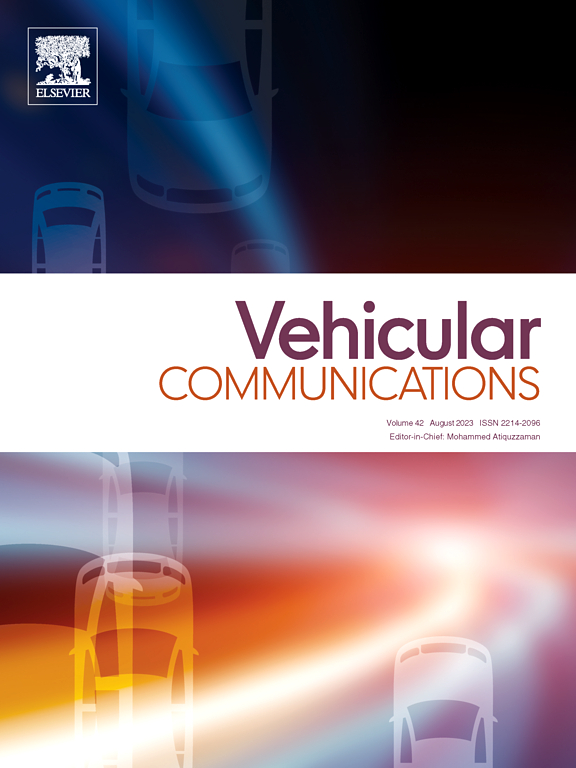A Multi-Head Attention mechanism assisted MADDPG algorithm for real-time data collection in Internet of Drones
IF 6.5
2区 计算机科学
Q1 TELECOMMUNICATIONS
引用次数: 0
Abstract
Flexible movement and rapid deployment capabilities of unmanned aerial vehicles (UAVs) or drones have enabled them to be ideal for fresh and real-time data collection in the Internet of Drones (IoD) network. With the rising demand for IoD applications, optimizing the Age of Information (AoI), and energy efficiency of drones has become a challenging problem. The existing literature works are either limited by considering single-drone data collection from 2D space or by not prioritizing data from diverse IoT devices. In this paper, we have developed an optimization framework for multi-drone-assisted data collection in 3D space, which brings a trade-off between minimizing drone energy consumption and AoI, exploiting the Mixed Integer Linear Programming (MILP) problem. However, due to the NP-hardness of the developed optimization framework for large networks, we have devised a Multi-Agent Deep Deterministic Policy Gradient (MADDPG) algorithm, supported and enhanced by a Multi-Head Attention (MHA) mechanism for multi-drone-assisted data collection to minimize drone energy consumption and AoI jointly, namely MECAO. The MHA in the MECAO system helps prioritize IoT data sources and ensures the timely collection of important data. This system enables the agents to coordinate effectively among themselves and provides innovative solutions to complex network issues. Our findings demonstrate substantial advancements in real-time data collection and drone performance, offering a practical and efficient solution for modern IoD applications. The developed MECAO system is implemented in the OpenAI Gym simulator platform, and the simulation trace file content depicts the improvement in AoI by up to 56% while the energy consumption is reduced by as high as 38.5%, respectively, compared to the state-of-the-art works.
基于多头注意机制的无人机互联网实时数据采集madpg算法
无人机(uav)或无人机的灵活移动和快速部署能力使其成为无人机互联网(IoD)网络中新鲜和实时数据收集的理想选择。随着IoD应用需求的不断增长,优化无人机的信息时代(AoI)和能源效率已成为一个具有挑战性的问题。现有的文献作品要么受到单一无人机从二维空间收集数据的限制,要么没有优先考虑来自不同物联网设备的数据。在本文中,我们开发了一个用于多无人机辅助三维空间数据收集的优化框架,该框架利用混合整数线性规划(MILP)问题,在最小化无人机能耗和AoI之间进行权衡。然而,由于所开发的优化框架对于大型网络具有np -硬度,我们设计了一种多智能体深度确定性策略梯度(madpg)算法,该算法由多头注意(MHA)机制支持和增强,用于多无人机辅助数据收集,以最小化无人机能耗和AoI,即MECAO。MECAO系统中的MHA有助于对物联网数据源进行优先排序,确保重要数据的及时收集。该系统使agent能够有效地相互协调,为复杂的网络问题提供创新的解决方案。我们的研究结果表明,在实时数据收集和无人机性能方面取得了实质性进展,为现代IoD应用提供了实用高效的解决方案。所开发的MECAO系统在OpenAI Gym模拟器平台上实现,仿真跟踪文件内容显示,与最先进的作品相比,AoI提高了56%,能耗降低了38.5%。
本文章由计算机程序翻译,如有差异,请以英文原文为准。
求助全文
约1分钟内获得全文
求助全文
来源期刊

Vehicular Communications
Engineering-Electrical and Electronic Engineering
CiteScore
12.70
自引率
10.40%
发文量
88
审稿时长
62 days
期刊介绍:
Vehicular communications is a growing area of communications between vehicles and including roadside communication infrastructure. Advances in wireless communications are making possible sharing of information through real time communications between vehicles and infrastructure. This has led to applications to increase safety of vehicles and communication between passengers and the Internet. Standardization efforts on vehicular communication are also underway to make vehicular transportation safer, greener and easier.
The aim of the journal is to publish high quality peer–reviewed papers in the area of vehicular communications. The scope encompasses all types of communications involving vehicles, including vehicle–to–vehicle and vehicle–to–infrastructure. The scope includes (but not limited to) the following topics related to vehicular communications:
Vehicle to vehicle and vehicle to infrastructure communications
Channel modelling, modulating and coding
Congestion Control and scalability issues
Protocol design, testing and verification
Routing in vehicular networks
Security issues and countermeasures
Deployment and field testing
Reducing energy consumption and enhancing safety of vehicles
Wireless in–car networks
Data collection and dissemination methods
Mobility and handover issues
Safety and driver assistance applications
UAV
Underwater communications
Autonomous cooperative driving
Social networks
Internet of vehicles
Standardization of protocols.
 求助内容:
求助内容: 应助结果提醒方式:
应助结果提醒方式:


